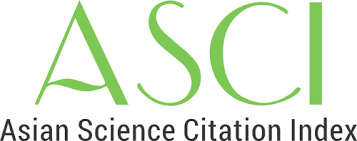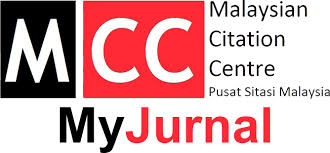ANALISIS PENANDA WACANA BAHASA ARAB DI DALAM SILIBUS KBD : BUKU TEKS USULUDDIN TINGKATAN TIGA [ANALYSIS OF ARABIC DISCOURSE MARKS IN KBD SYLLABUS USULUDDIN TEXTBOOK FORM 3]
Keywords:
Penanda Wacana bahasa Arab, buku teks Usuluddin, proses pengekodan, Arabic Discourse Markers, Usuluddin Textbook, Coding ProcessAbstract
Abstrak: Penanda wacana merupakan suatu komponen yang memainkan peranan di dalam sesuatu bahasa. Penggunaan perlu seiring dengan kohesi dan makna sesebuah ayat yang dikarang atau ditutur. Tujuan kajian ini adalah untuk menganalisis kewujudan penanda wacana Bahasa Arab di dalam buku Teks Usuluddin Tingkatan 3. Proses menganalisis buku teks ini melalui proses pengekodan iaitu menyenaraikan kesemua penanda wacana serta menyenaraikan jenis bagi setiap itu. Hasil analisis buku tersebut mendapati bahawa empat jenis penanda wacana bahasa Arab yang memberikan fungsi yang berbeza seperti تربط بين الكلمة او الجمل sebanyak 43.3%, أدوات الاستدراك والإضراب sebanyak 23.3%, ادوات النفي sebanyak 11.67% dan penanda wacana yang memberi fungsi روابط تمهد لتعليل فكرة، أو استنتاج sebanyak 8.3%. Kajian ini dapat membantu para guru dan pelajar untuk lebih memahami lebih mendalam mengenai jenis penanda wacana di dalam teks Arab.
Abstract: This discourse marker is a component that plays a very important role in a language. Its use must be in line with the cohesion and meaning of a sentence that is composed or spoken. The purpose of this study is to analyze the existence of Arabic discourse markers in the Usuluddin Textbook Form 3. The process of analyzing this textbook is through a coding process, which is to list all the discourse markers and list the types for each. The results of the book analysis found that four types of Arabic discourse markers that provide different functions such as تربت بين الكلمة او الجمل as much as 43.3%, أدوات الاستدراك والإضراب as much as 23.3%, أدوات النفي as much as 11.67% and discourse markers that provide the function of روابة تمحد لتعليل فكرة، واستنتاج as much as 8.3%. This article can help teachers and students to better understand the types of discourse markers in Arabic texts.
References
Al-Azzawie, H. M. 2014. Discourse markers in Arabic language. Journal of Education and Practice, 5(10): 23–30.
Al-Duleimi, A. S., Alshammari, H., & Alrefaee, Y. 2016. The use of discourse markers in Arabic media texts. International Journal of Applied Linguistics & English Literature, 5(7): 191–198. https://doi.org/10.7575/aiac.ijalel.v.5n.7p.191
Al-Khawaldeh, N. 2014. The functions of discourse markers in Arabic. International Journal of Linguistics, 6(3): 144–163. https://doi.org/10.5296/ijl.v6i3.5706
Al-Monami, A. 2019. The role of discourse markers in Arabic written texts. Arab World English Journal (AWEJ), 10(1): 56–68. https://doi.org/10.24093/awej/vol10no1.5
Al-Sowaidi, B., Saidat, A. M., & Hussein, A. 2015. Discourse markers in Arabic political speeches. International Journal of Language and Linguistics, 3(5): 67–77.
Asbulah, L. 2021. The influence of collocation knowledge on Arabic discourse markers usage. Journal of Arabic Linguistics, 12(2): 45–60.
Atabik, A., & Yahya, M. 2022. Arabic clause structures: Syntax and semantics perspectives. Journal of Arabic and Islamic Studies, 22(1): 101–118. https://doi.org/10.5617/jais.9180.
Fraser, B. 1999. What are discourse markers? Journal of Pragmatics, 31(7): 931–952. https://doi.org/10.1016/S0378-2166(98)00101-5
Halliday, M. A. K., & Hasan, R. (1976). Cohesion in English. London: Longman.
Hassan, H., & Eltahir, Y. 2017. Discourse markers and cohesion in Arabic texts. International Journal of Humanities and Social Science Research, 7(1): 50–58.
Hussin, N., Rahman, A., & Abdullah, Z. 2020. Students’ perceptions towards Arabic discourse markers. Journal of Language Studies, 20(2): 77–89.
Hyland, K., & Tse, P. 2004. Metadiscourse in academic writing: A reappraisal. Applied Linguistics, 25(2): 156–177. https://doi.org/10.1093/applin/25.2.156
Ismail, R., Sulaiman, N., & Hamzah, A. 2021. Errors in the use of Arabic clauses among Malaysian students. Journal of Modern Languages, 31(2): 35–51.
Lutfiani, N. 2023. Training students in understanding Arabic clauses for effective communication. Al-Tajdid: Journal of Arabic Studies, 7(1): 22–34.
Nisa, S. 2023. The effectiveness of media in improving Arabic discourse comprehension. International Journal of Language Education, 7(2): 112–123. https://doi.org/10.26858/ijole.v7i2.12345.
Nur Naimah Akmar Kamaruddin & Harun Baharudin. 2017. Strategi Pembelajaran Kosa Kata dan Penguasaan Pengetahuan Kosa Kata Arab dalam Kalangan Pelajar STAM. Attarbawiy: Malaysian Online Journal of Education, 1(1): 64-73.
Prihantari, D., & Saputra, R. 2021. Discourse markers in Arabic classroom interaction. Arabiyat: Jurnal Pendidikan Bahasa Arab dan Kebahasaaraban, 8(2): 223–240. https://doi.org/10.15408/a.v8i2.21700.
Rosni Samah, R., Ahmad, N., & Zulkifli, N. 2023. Challenges in translating Arabic discourse markers among Malaysian students. Journal of Arabic Studies in Education, 5(1): 89–102.
Shaw, P. 2009. Linking adverbials in student and professional writing in a cross-cultural context. Journal of Second Language Writing, 18(2): 90–109. https://doi.org/10.1016/j.jslw.2009.02.002.
Swales, J. M. 2010. Research genres: Explorations and applications. Cambridge: Cambridge University Press.
Yusoff, N. M. R., Ahmad, S., & Rahim, M. 2020. The effect of students’ attitudes on mastering Arabic discourse markers. Malaysian Journal of Learning and Instruction, 17(2): 151–170.













